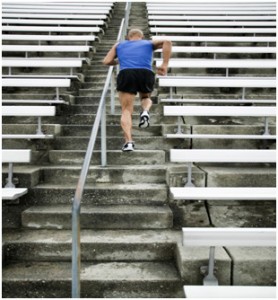Tips & Health Risk of Getting a Tattoo:
 In Western culture tattoos are often seen as something associated with people on the edge of society. Since the early 90s, however, tattooing has become more common and socially acceptable in Australia.
In Western culture tattoos are often seen as something associated with people on the edge of society. Since the early 90s, however, tattooing has become more common and socially acceptable in Australia.
Although more people these days seem to have tattoos, getting one still carries some risks.
Note: In South Australia it is an offence for young people under the age of 18 years to be tattooed, except if it is done for a medical reason by a doctor or someone supervised by a doctor.
History
Tattooing has been around for nearly as long as humans have been around. An early example was found on a frozen body 9000 years old! Tattooing has become a part of the culture of almost all societies.
Early Christians used tattoos as symbols of recognition, until they were banned by Papal edict.
The word ‘tattoo’ was first brought to the English language after Captain Cook’s voyages to Tahiti. Western sailors then began to adopt tattooing.
In the early 19th century, tattooing became very popular with criminals and the working class in Britain and the US; hence the association of tattoos with people on the fringes of society. Tattooing retained this negative image until its recent revival as a mainstream symbol of individuality as well as defiance.
Reasons people get tattoos
There are many reasons why people choose to have a tattoo on their body, including:
- Cultural reasons – i.e. coming of age or rites of passage
- To express individuality
- To indicate membership of a particular group or way of life
- To make a statement
- To establish a permanent reminder of an event – such as the death of a loved one
- To reclaim the body after an event – for example, a sexual assault
- To make the body more pleasing to their eye
- To annoy parents?
It seems that getting a tattoo can make someone look like an individual or a conformist, depending on your view. People have been known to get tattoos as an impulsive act, perhaps when they were intoxicated – and they may or may not regret it later when they are sober.
Health risks
Getting a tattoo at an accredited professional tattoo parlor is relatively risk-free, but getting a tattoo still puts you at risk of the following:
- serious infectious diseases such as hepatitis C, hepatitis B or HIV (which are passed on via infected blood or other body fluids), or tetanus
- skin infections such as impetigo (‘school sores’)
- dermatitis
- flare ups of existing eczema
- allergic reactions
- thick scars called keloids (you are more likely to get these if you have dark skin)
- distress due to regret after the procedure – this has been identified as one of the main problems after getting a tattoo.
Things to consider
Tattooing is a painful process, and tattoos are expensive to remove. If you want to have a tattoo removed there will always be a scar.
You need to carefully consider the reasons behind your need to get a tattoo before going through with it. Trends come and go, but a badly chosen tattoo lasts forever, or costs a lot to remove. Just ask Johnny Depp or Angelina Jolie.
If you do decide to get a tattoo, you need to go to a qualified professional. Home-made tattoos, such as those made with Indian ink, should never be considered.
When choosing a tattoo artist you should make sure of the following:
- that the tattoo parlor uses new sterile equipment for each client, or thoroughly cleans and sterilizes equipment (eg. by using an autoclave)
- Those standard precautions are followed to reduce risks of infections, as used in many places, including hospitals. Can they show you how they keep clients safe?
- that the tattoo artist has credentials, a license and references
- That the tattoo parlor looks clean, safe and professional. You should use your judgment and keep away from a parlor that seems dodgy.
If the tattoo artist is a professional, then he or she will be happy to show you the ways in which their workplace adheres to standard safe practices. If they are uncooperative or give you a hard time because of your requests, simply leave – they do not deserve your trust or your business.
If you get a tattoo
A new tattoo requires some careful attention. A tattoo is an open wound until it heals. Here are some general rules, but make sure you follow the advice of the tattoo artist about how to best care for the area.
- The artist will usually apply an ointment like those used for nappy rash or another product especially made for tattoos, and then covers it.
- After an hour or two the tattoo should be washed with warm soapy water, and then patted dry with a clean towel. Do not rub over the tattoo. The ointment is lightly applied and the tattoo covered again. This process will need to be repeated daily for about a week.
- During this time you should not soak your tattoo. This means no pool, seawater or baths, so if you are planning to go swimming maybe you should schedule the tattoo for another time.
- Do not expose your tattoo to direct sunlight for this period either. After it is healed you need to put sunscreen on it each time you expose it. The sun will drain the color over time, and the tattooed area could be more susceptible to harmful rays.
- The tattoo will leak some fluids, become itchy and peel. This is normal, but make sure that you don’t scratch the tattoo or pick at the scabs; this could cause damage to the tattoo.
- If the skin around the tattooed area becomes very red, swollen or tender, this can mean that the area is infected. Go to a doctor, as you might need antibiotic treatment.
Resources
South Australia
- The Second Story Youth Health Service (TSS)
– Central: 57 Hyde St, Adelaide
– South: 50a Beach Rd, Christies Beach
– North: 6 Gillingham Rd, Elizabeth


 A report released by the University of Minnesota Boynton Health Service is the first of its kind in the nation to conduct a comprehensive survey on the health of college students. About 10,000 college students completed the survey. Although the study is focused on students from 14 campuses in Minnesota, the health findings here reflect national health trends for college students, says Dr. Ed Ehlinger, the director and chief health officer of the university’s Boynton Health Service.
A report released by the University of Minnesota Boynton Health Service is the first of its kind in the nation to conduct a comprehensive survey on the health of college students. About 10,000 college students completed the survey. Although the study is focused on students from 14 campuses in Minnesota, the health findings here reflect national health trends for college students, says Dr. Ed Ehlinger, the director and chief health officer of the university’s Boynton Health Service. Changes In Stair Design Could Help Fight Obesity
Changes In Stair Design Could Help Fight Obesity